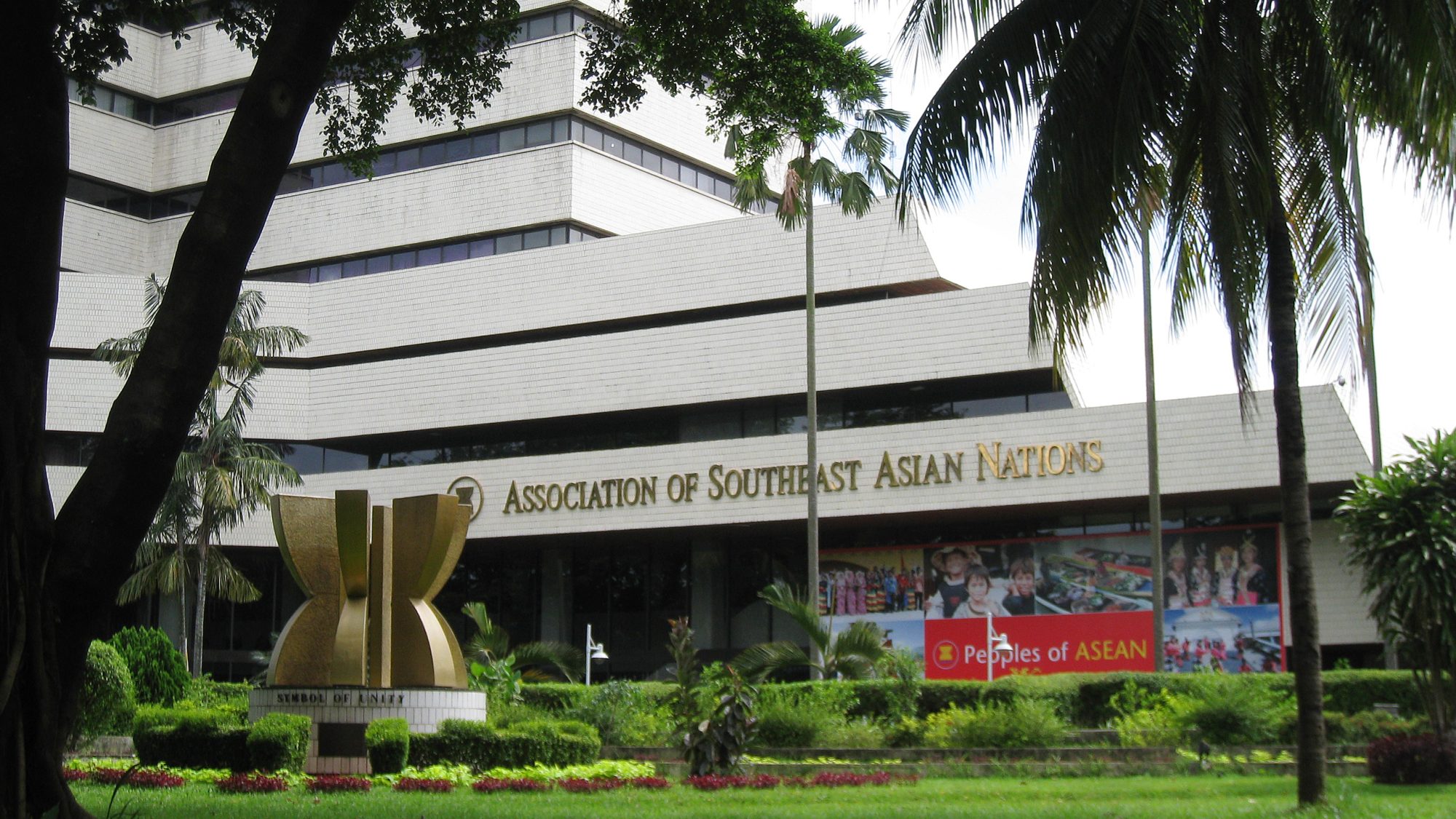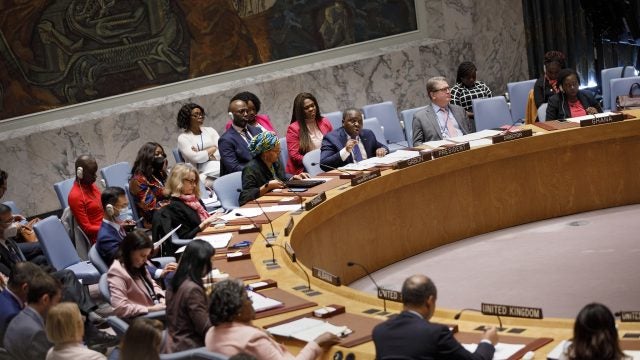
Title: Understanding Southeast Asia’s Digital Landscape, Calculus, and Agency
Southeast Asia’s digital landscape is a pixelated patchwork of partners. As geopolitical tensions threaten a decoupling that will ripple through all aspects of technology including the rule-making frameworks that underpin the functionality of technology (tech), the viability of Southeast Asia’s preference for interconnected and interoperable infrastructure may increasingly be tested. The region would do well to assert its growing agency in this tech space by carving out its own digital future.
Southeast Asia’s digitalization-for-development agenda has been driven by a buoyant trifecta of consumers, industry, and government. The region’s tech space – populated by domestic and foreign stakeholders constructing subsea cables, satellite navigation systems, data centers, and a growing number of Smart Cities – reflects “the age of digital interdependence.” It is also a cautionary glimpse into the possibilities and constraints of the region’s future amid a deepening rift between the United States and China.
A Multi-Player Digital Landscape
Although the digital divide within and across Southeast Asian countries remains a significant impediment for the region, there is a growing population of mobile-first consumers to support a burgeoning “e-conomy.” Between 2020 and 2021, at the height of the pandemic and largely necessitated by lockdowns across different Southeast Asian cities and countries, 40 million additional people joined some 450 million of the region’s existing Internet users. The region’s digital economy is forecasted to exceed US$300 billion by 2025, potentially hitting a value of US$1 trillion by 2030.
Investor confidence affirms this projection. Early American entrants such as Microsoft and Cisco that have long had a foothold in the Association of Southeast Asian Nations (ASEAN) region have been joined in recent years by Amazon Web Services, Google, and Meta. In addition to constructing a US$1 billion data center in Singapore, Meta is laying down three trans-Pacific submarine cables scheduled to come online in 2023 and 2024. Two of those cables are co-owned by Google in partnership with telecommunication companies in Singapore, Indonesia, and the Philippines. These huge capital outlays not only signal long-term presence but also planned market expansion and by extension, increased influence and leverage in the region.
Chinese tech giants, relative newcomers to the Southeast Asian market, have made up for time and in a big way. Tencent and Alibaba were early supporters of e-commerce growth in the region, investing in now mega-platforms such as Shoppee and Lazada. With between 50 to more than 70 percent of Southeast Asia’s population underbanked, it is little surprise that mobile wallets have become ubiquitous with Alipay dominating the regional market and WeChat Pay hoping to compete.
Although Southeast Asia’s robust start-up scene is indicative of the region’s bullish outlook, the vast majority of its economy is anchored by more conventionally structured and funded micro, small, and medium enterprises (MSMEs) which comprise an average 97 percent of all enterprises. Bringing MSMEs and therefore, most of Southeast Asia’s business population, online in order to advance inclusive growth necessitates improved digital access and interconnections of networks nationally and regionally.
This requires a symbiotic public-private ecosystem anchored by a clear vision, governance frameworks, and industry commitment. The e-ASEAN Framework Agreement formulated over two decades ago was an early show of acumen in registering the “opportunities from ICT and electronic commerce” for the region’s population.
Today, there is a plethora of ASEAN-wide and national level policies, strategies, and blueprints. At the regional level, these include the Masterplan on ASEAN Connectivity 2025, ASEAN Consolidated Strategy on 4IR, and ASEAN Smart Cities Network. At the national level, Southeast Asian governments are betting on a digitalized future with integrated high-tech national plans such as Singapore’s Smart Nation initiative, Thailand 4.0, and Malaysia 5.0. Indonesia’s National Artificial Intelligence (AI) Strategy outlines the country’s AI development framework for the next two decades while the Philippines has its own National AI Roadmap.
The sheer scope of each of these nascent plans requires a multitude of players, each bringing their own comparative advantages to match the varied national and regional capacities of Southeast Asia. Countries will vary with their own risk assessments and decisions will be based on a combination of technical, commercial, and political calculations. Underlying these considerations is a proclivity to enmesh partners into an interoperable and integrated framework, in line with the region’s general aversion to choosing sides.
Southeast Asia’s numerous partners are evident in documents such as the eighteen-country EAS Leaders’ Statement on ASEAN Smart Cities; initiatives such as the US-ASEAN Smart Cities Partnership and the ASEAN-China Science, Technology, and Innovation Cooperation; as well as technical assistance efforts funded by Japanese and European agencies, among others.
Differing Risk Calculations
It is crucial to understand that the framing of strategic risk is dramatically different among countries in Southeast Asia than it is for the United States and its allies. China is not viewed as an adversary even if its growing muscularity in the security arena generates concern and anxiety. Rather, China is as much an important partner in Southeast Asia’s digital and development agendas as are other powers.
This is true even of the United States’ oldest treaty ally in Asia: Thailand. The country’s Eastern Economic Corridor smart city initiative is jointly funded by China and Japan. Although Bangkok has stated it will be mindful of security-related concerns in its 5G core network, there are already plans for Huawei to build three 5G city benchmarks to support the Asia-Pacific Economic Cooperation Summit to be hosted in Thailand in November 2022.
The US-China technological rivalry that will be reinforced through the Australia-United Kingdom-United States (AUKUS) and Quad arrangements will have ramifications for the interoperability of different platforms, systems, and networks in Southeast Asia. For the ASEAN region, the preference for intra-regional connectivity through multi-partner integration will prove tricky if its choices are narrowed down to the proverbial binary. In some instances, the either-or choice may not even be practical or make much sense.
A number of Southeast Asian countries are trialing the deployment of both Huawei’s 5G and Open Radio Access Network (O-RAN) in different locations, based on topography and rural/urban density. Although O-RAN is touted as a competitive alternative to Huawei’s proprietary 5G offerings, the distinction is not as reductive. Huawei may not be a member of the operator-led O-RAN Alliance, which oversees O-RAN’s technical work, but China Mobile is a founding member of the Alliance and co-chairs ten out of its fourteen working groups. If the pitch is for O-RAN to best Huawei and by extension, China, in the 5G game, the O-RAN Alliance proves the field is more complex than it seems. Further, the lesson of Nokia suspending its technical work in the Alliance last year out of US entity list compliance concerns only underscores the hazards of the politicization of technology for Southeast Asia, which is already averse to entrapment in major power rivalry.
The parable of 5G has implications for other technologies such as artificial intelligence (AI). Significantly, the battle for technological—and therefore, political, economic, and military—ascendancy is being fought in the domain of technical standards; principles; as well as norms and international law.
This development is not altogether unexpected given what some fear to be an imminent displacement of incumbent tech leadership by Europe and the United States. After all, China’s Standardization Administration explicitly aspires to, “formulate at least 1,000 systematic plans and tasks to create foreign-language versions of Chinese standards and strive to reach 2,000 key technical indicators in key areas of standardization.” Taken together, Made in China 2025, China Standards 2035, the Digital Silk Road, and Belt and Road Initiative seem a formidable blueprint for China to set technology’s rules of the road for the foreseeable future. The question is whether Southeast Asian countries will contribute to some of that rule-making themselves.
Building Agency
As a grouping of ten countries with varying levels of capacity, ASEAN has advanced fairly quickly on cyber norms. Having accepted the eleven UN GGE norms of responsible state behavior in 2018, it is now moving towards implementation in parallel with ongoing cyber capacity-building programs led by the ASEAN-Singapore Cybersecurity Centre of Excellence–in collaboration with ASEAN member states as well as Dialogue and other international partners.
The same effort at capacity-building in the technical, policy, and legal spheres should be mirrored within ASEAN for other emerging technologies such as AI: where questions related to ethics, inclusion, and social justice in AI design, data collection and classification, as well as algorithmic training remain inadequately unpacked despite Southeast Asia’s ethnic, linguistic, and religious diversity.
With technology cutting across a country’s economic, political, defense, and social pillars, training and capacity-building efforts should be holistic and multi-disciplinary. It should encompass a long view of technology which would require an understanding of technology’s past and present impact on the region in order to position Southeast Asia more competitively in the future.
Relatedly, apart from cooperation with advanced economies, Southeast Asia could benefit from greater exchange with other developing regions such as Africa and Latin America that are similarly building their technological capacity in innovative ways and may have interesting parallel lessons to share.
Finally, it is vital that ASEAN countries participate in international discussions on technology regardless of whether they are innovators themselves. Presence and representation are important. Even showing up as observers wherever possible if only to listen and learn is a self-help capacity-building measure.
Southeast Asia’s connectivity, digital future, and its rules should include as many partners with as many ideas, as possible—from Silicon Valley to the Silicon Savannah, Bangalore to Bogota. There should be interlinkages, integration, and interoperability wherever possible. For that, Southeast Asia will need to step in and step up.
. . .
Elina Noor is the Director of Political-Security Affairs and Deputy Director of the Washington, D.C. Office at the Asia Society Policy Institute. A native of Malaysia, Elina’s work focuses on security developments in Southeast Asia, global governance and technology, and preventing/countering violent extremism. Between 2017 and 2019, Elina was a member of the Global Commission on the Stability of Cyberspace. She currently serves on the ICRC’s Global Advisory Board on digital threats during conflict. She obtained an LL.M from The London School of Economics and Political Science, University of London. A recipient of the Perdana (Malaysian Prime Minister’s) Fellowship, she also holds an MA in Security Studies from Georgetown University where she was a Women in International Security Scholar.
Image Credit: Wikimedia Commons; Creative Commons Attribution-Share Alike 3.0 Unported; Gunawan Kartapranata
Recommended Articles

This article explores the uncertain future of Arctic governance amid shifting global geopolitics. It argues that whether Washington and Moscow opt for confrontation or cooperation, multilateralism in the Arctic…

Twenty-five years ago, the United Nations Security Council adopted Resolution 1325, establishing a framework that underpins the Women, Peace, and Security (WPS) Agenda. The Resolution recognized both the…

When we analyze conflicts in the Middle East, we are not analyzing conflicts with isolated impacts but risks for global energy security. Recent conflicts in the Middle East have highlighted…